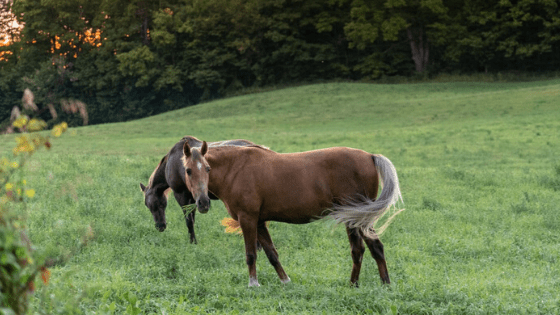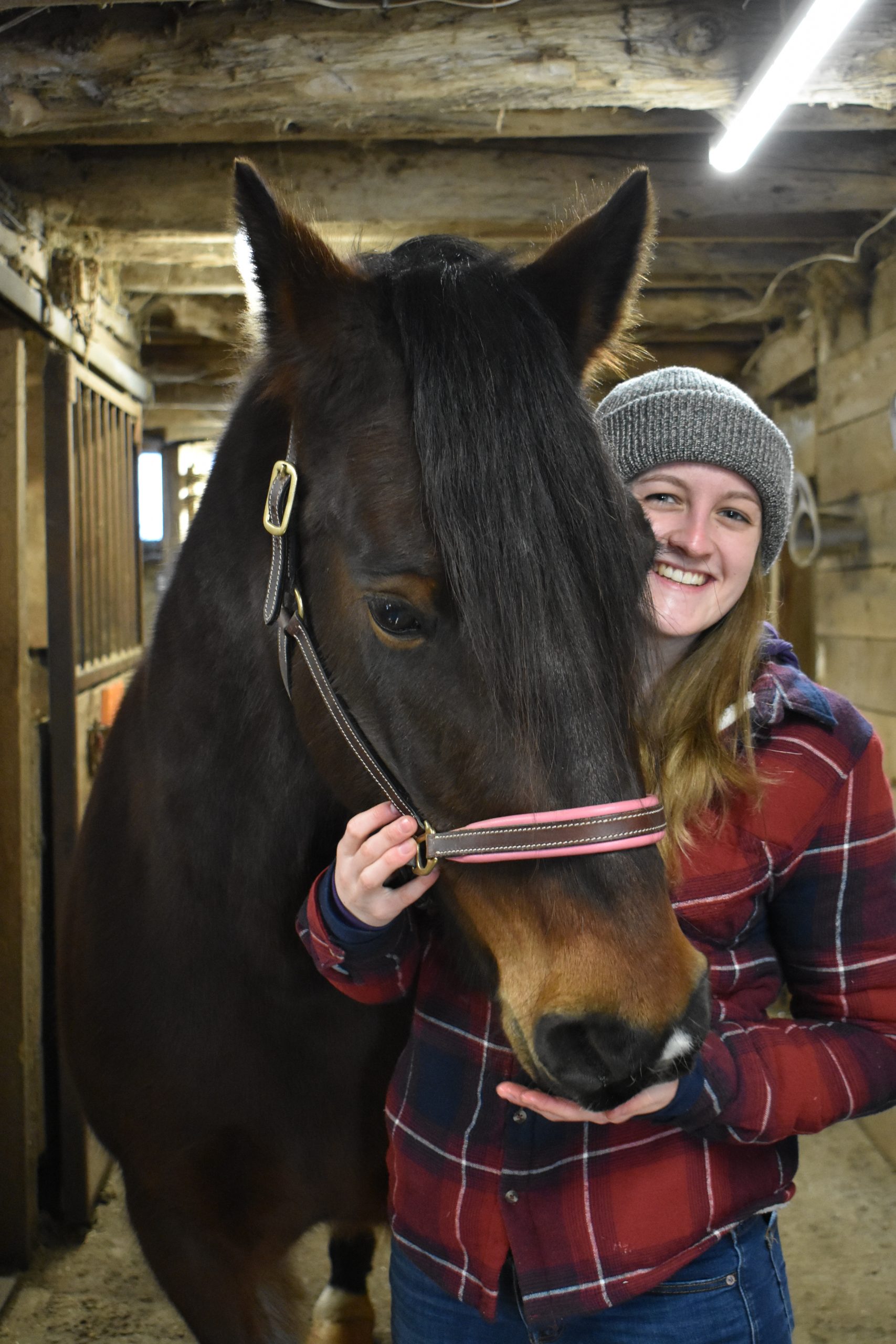Learn the importance horses moving their feet while they eat
The three main behavioural needs of horses are sociability, locomotion, and foraging. It is well known that access to forage improves gastrointestinal tract (GIT) health, but how can we use locomotion to further support our horses in their digestion?
While humans have been genetically selecting for specific traits in domestic horses, their behavioural needs remain the same as feral horses. Research comparing the time budget of feral and domestic horses in various housing systems illustrates many differences. Research has suggested that in order to maximize welfare of the domestic horse, their time budget should closely resemble that of a feral horse. Below is a chart demonstrating time budget differences in various housing systems compared to feral horses:
| Behaviour | Feral Horse | Stabled Horse | Pastured Horse |
|---|---|---|---|
| Locomotion | 9.5% | 0% | 5.27% |
Confinement of horses has been linked to alteration in gastrointestinal mucosal transport, motility and microbiome disturbances which creates a GIT environment predictive of colic. Changes in mucosal water transport have also been described when the horse does not have active free movement.
So, how can we increase free movement in horses that are already housed outdoors?
It has been found that when “track systems” are used, horses increase their locomotion. A “track system” encourages horses to walk more by making them follow a track to get to their resources such as hay, water, and shelter. Having them walk more while ensuring they have access to free choice forage supports their digestion through better gastrointestinal tract motility. Increased free movement also reduces the negative changes we often see in domestic horse mucosal water transport.
The Wishing Well Farm set up a track in 2022 and uses pedometers on the horses to assess their locomotion. They are finding that making small changes in the track layout and the locations of resources can make big changes in the number of steps per day.
Sources
Blikslager, A. T. (2019). Colic prevention to avoid colic surgery: a surgeon’s perspective. Journal of equine veterinary science, 76, 1-5.
Cooper, J., & McGreevy, P. (2007). Stereotypic behaviour in the stabled horse: causes, effects and prevention without
compromising horse welfare. In The welfare of horses (pp. 99- 124). Springer, Dordrecht.
Flannigan, G., & Stookey, J. M. (2002). Day-time time budgets of pregnant mares housed in tie stalls: a comparison of draft versus light mares. Applied Animal Behaviour Science, 78(2-4), 125-143.
Kiley-Worthington, M. (1990). The behavior of horses in relation to management and training—towards ethologically sound environments. Journal of Equine Veterinary Science, 10(1), 62- 75. Marliani, G., Sprocatti, I., Schiavoni, G., Bellodi, A., & Accorsi, P. A. (2021). Evaluation of Horses’ Daytime Activity Budget in a Model of Ethological Stable: A Case Study in Italy. Journal of Applied Animal Welfare Science, 24(2), 200-213.

